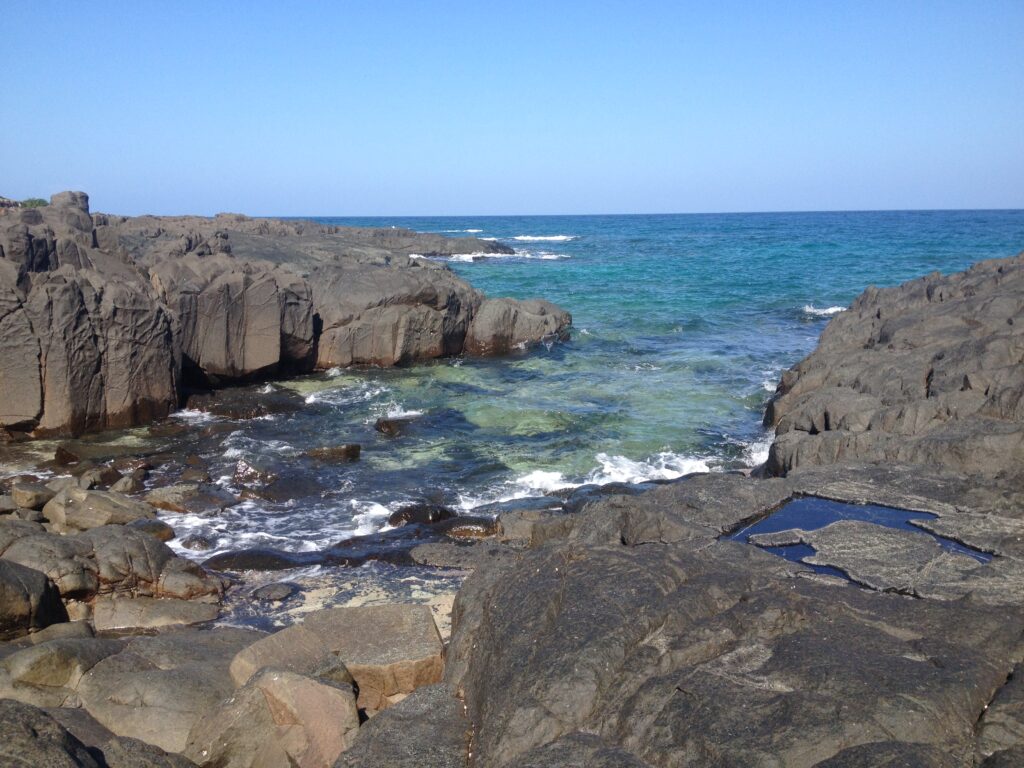Iguana Island is the main attraction of Pedasi, apart from the humpback whales that can be seen on a combined tour with the island. It is only possible to see whales in Panama during June or July until October in the Pacific Ocean. These humpback whales come to Panama to give birth and teach their young to swim. You can also see bottlenose dolphins and Pacific spotted dolphins on the tour.
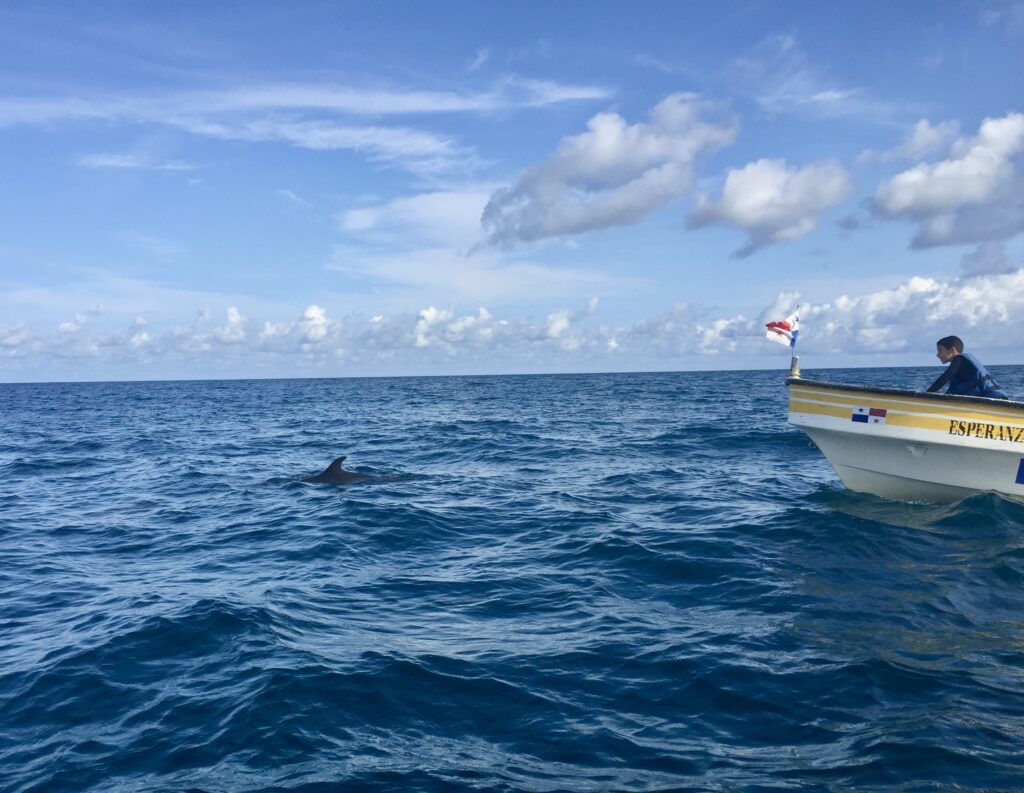
We organize tours to Isla Iguana and whale watching tours in Pedasi, you just have to contact us at ur****@***************up.com or +507 6448 5560.
Booking.comWildlife Refuge
Iguana Island was declared a wildlife refuge in 1981. This island protects a large coral reef, many species of fish and birds. This refuge has 53 hectares, of which 40 hectares are coral and 13 hectares make up the island with dry tropical forests. This island is formed by intrusive basalt rocks, a consequence of submarine volcanic eruptions. Expanding the boundaries of the wildlife refuge is currently being considered.

This place is an important nesting site for seabirds. Upon arrival you will see frigate birds flying over, their colony on this island includes about 5,000 birds that are very attractive due to red inflatable pouch on the throat of the males.
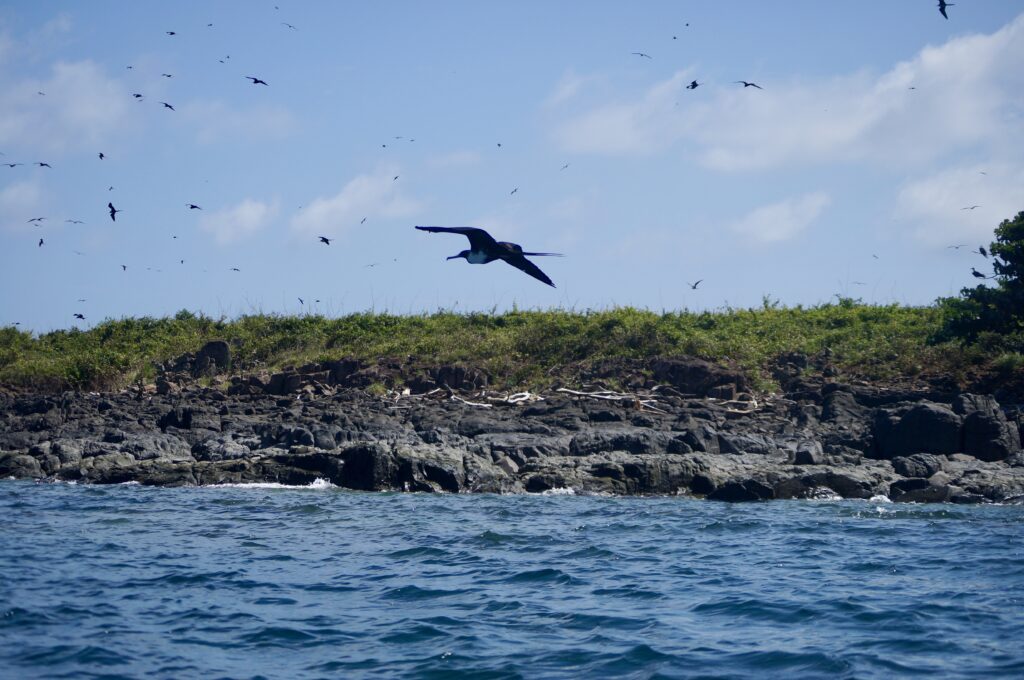
As its name suggests, this island is full of iguanas that pose for you to take their photos. You will also see many huge crabs that are red and purple. Five species of sea turtles come to the island to nest between April and September. On the mainland there are more than 400 hectares of mangroves that are protected by the island. There are mangrove tours in Pedasi and Cañas Island.
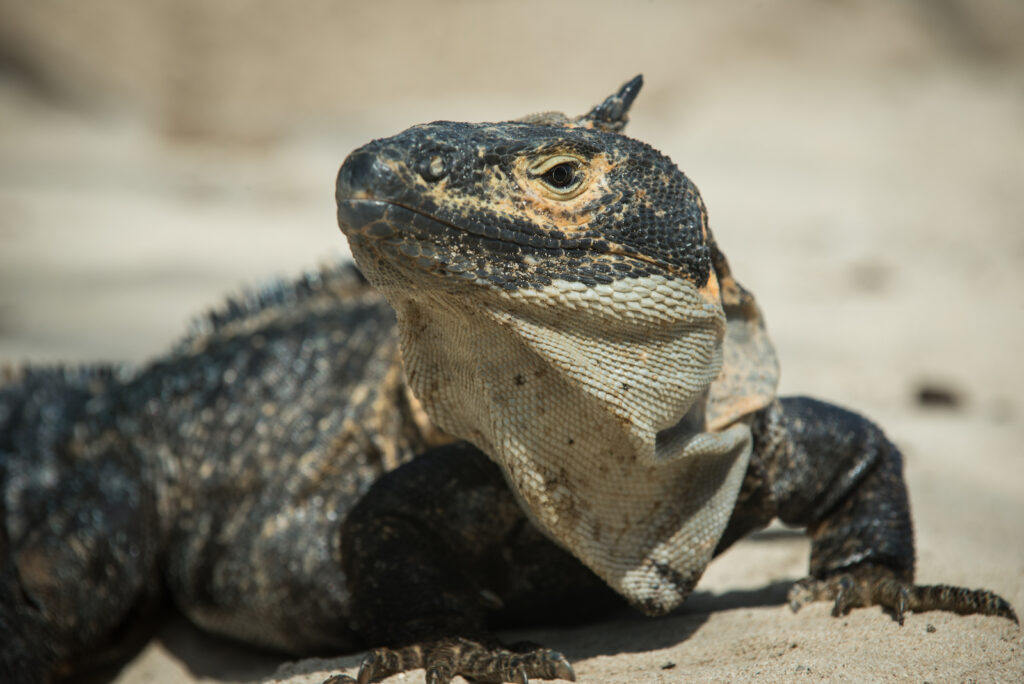

Iguana Island Tour
It is possible to take a tour to this island any day of the year. However, summer (January to April) brings more wind and sometimes it is not possible to sail because the ocean can be very choppy. This should not happen in the green season (May to December), but sometimes there are changes in the wind that cause this phenomenon.
The tours to this paradisiacal island leave in the morning to take advantage of the day. It is possible to leave from Mariabe, which has a shorter and more direct crossing, or from Arenal Beach in Pedasi. The crossing can take anywhere from 15 to 45 minutes depending on where you depart from and the condition of the ocean. Iguana Island is located about 5 kilometers from the coast.
The carrying capacity of the island is 300 people per day. As it is a national reserve, each national passenger must be registered with their name and ID and foreigners with their passport. If you leave from Playa Arenal it is important to carry out your documentation. In the case of Mariabe, it is requested in advance to make a pre-registration with the Panama Maritime Authority. You can visit this island of Pedasi from 7 a.m. to 4 p.m. Since the pandemic, admission to Iguana Island is not being charged.
There is no infrastructure on the island apart from a Panama Ministry of Environment building (which has a bathroom) and some thatched umbrellas. Visitors must bring food and non-alcoholic beverages. It is important that you take all your trash with you when you leave. It is possible to camp on the island with permission but there is no hotel on the island. You must stay with us at Finca Las Libelulas or in a hotel in Pedasi.
Many people ask us what to take to Iguana Island. We recommend taking organic insect repellent and biological sunscreen (not to affect the corals), a towel, sunglasses, a hat, a bathing suit, a GoPro or an underwater camera. You can not bring pets to the island and you can not smoke.
What to do in Iguana Island?
The beach at Iguana Island is quite different than the rest of the beaches on the Azuero coast and in Pedasi. The first thing you will see is turquoise water with white sand (not golden like Pedasi and Playa Venao or black like Cambutal) with palm trees and other trees in the background. Many people just hang out at this beach called El Cirial for swimming.
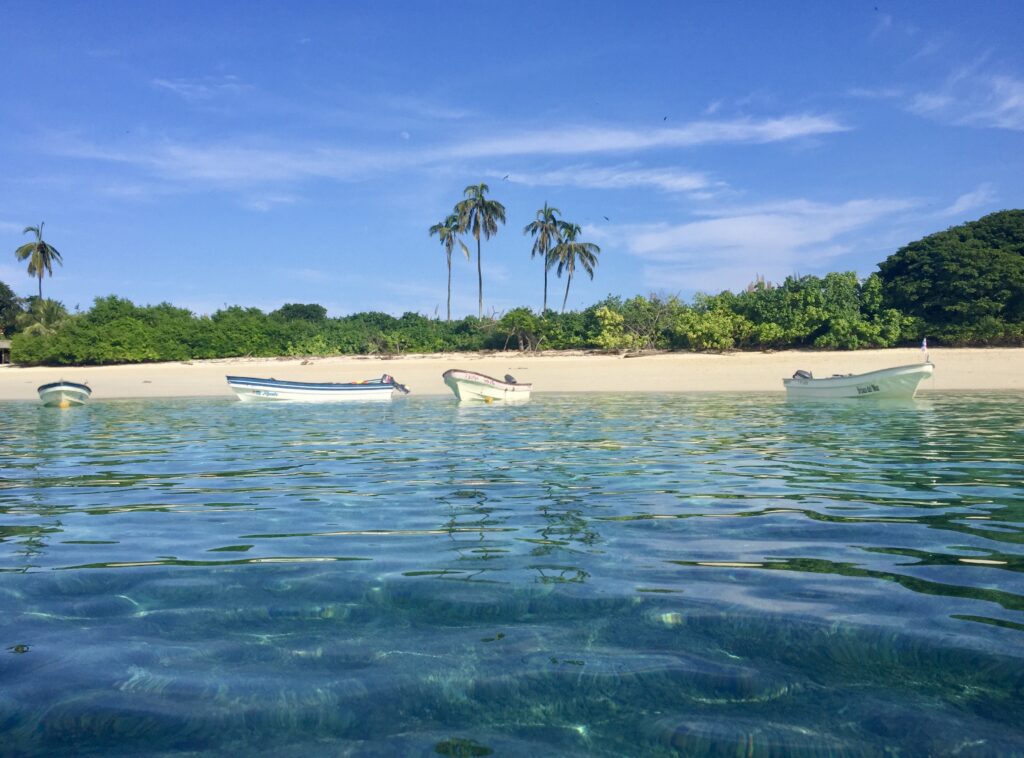
This island is excellent for snorkeling as it has more than 347 species of fish. Those who do not have equipment can rent in the town of Pedasi or on the island itself for a small fee. Some tour options to Iguana Island include snorkeling equipment. Around the island there are more than 40 hectares of coral reefs that include some 17 species. It is possible to do scuba diving in Iguana Island. Divers go to the north of the island where more schools of fish, octopus and moray eels can be seen. Other people bring their boards to stand up paddle in the calm waters of the bay.
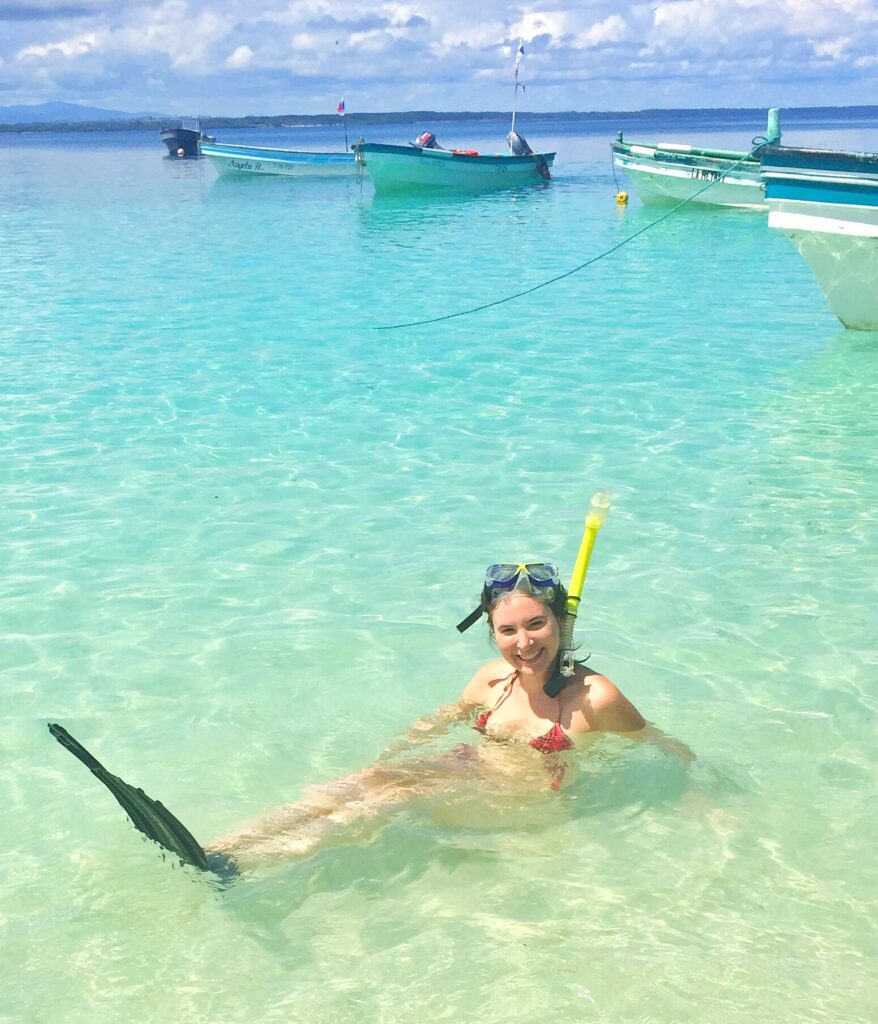
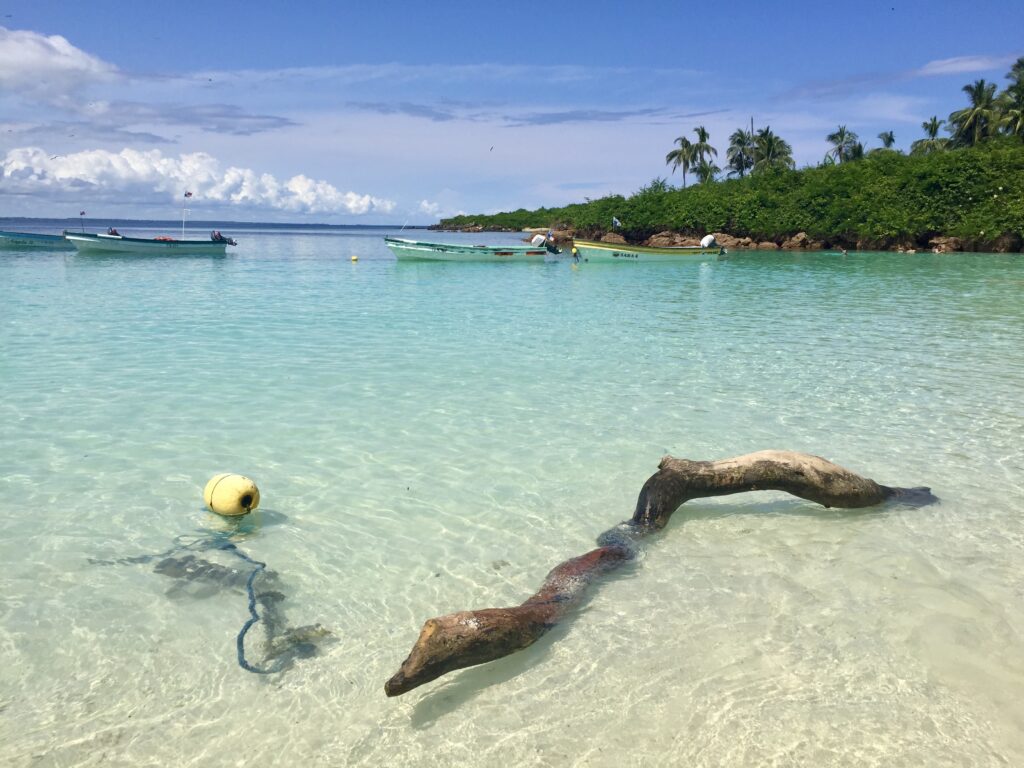
There is another smaller and secluded beach on the other side of the island called El Faro. Unlike El Cirial beach, El Faro beach does have currents and waves. Crossing from one side of the island to the other is quite easy following a path. Those who walk the trail will see one of the curiosities of the island as a huge crater can be seen. The island was used as a practice site by the US Army during World War II. It is advisable to stay on the trail as it is not clear if they have removed all the unexploded bombs.
